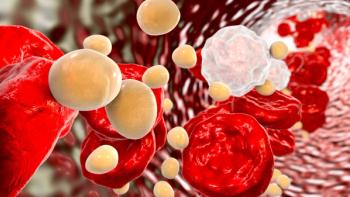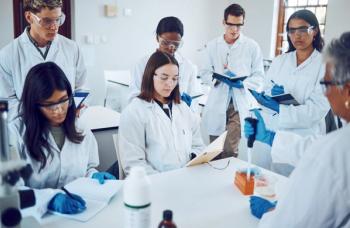
Gene Implicated in Germ Cell Tumor Development
PRDM14 is involved with embryonic development and may lead to germ cell tumors.
Germ cells eventually develop into sperm and eggs. If these cells become cancerous, they have the potential to form a group of rare cancers called germ cell tumors. Germ cell tumors account for 3% of all cancer types in children and adolescents.
Germ cell tumors generally develop in the testes and ovaries of a developing embryo but can sometimes migrate to other parts of the body and grow in the chest, spine, and brain of an embryo, according to the authors.
In some cases, germ cell tumors are not detected until adolescence and young adulthood.
“What makes this cancer really hard to study is that we think the disease begins in the womb and then remains latent until after birth or during young adulthood,” said study author Amander Clark, PhD. “That means we can’t easily isolate or study the very earliest stages of the disease in patients.”
There are 5 types of germ cell tumors with their own individual properties, including germinomas, embryonal carcinomas, yolk sac tumors, choriocarcinomas, and teratomas, according to the study.
The current treatments for germ cell tumors often have severe adverse effects, which may lead to future complications, according to the authors.
“When you’re talking about treating a 15-year-old who wants to live for 70 more years, those side effects can have major impacts on the lives of these patients,” said contributing author Joanna Gell, MD.
Current data suggest that children and adolescents who undergo chemotherapy treatments can develop heart disease or become infertile. These patients are also at a higher risk of developing another type of cancer, according to the study.
Researchers hypothesize that a gene involved in embryonic development may play a vital role in the formation of germ cell tumors. The gene, PRDM14, is no longer produced in healthy adult cells and has been linked to testicular cancer in men, according to the study.
The authors used pluripotent stem cells to imitate germ cell formation at the embryonic stage, otherwise known as primordial germ cells. They designed the cells to produce more PRDM14.
Although higher levels of the gene did not affect the formation of the imitation primordial germ cells, it did increase the rate at which they produced. Additionally, increased PRDM14 did not allow the imitation primordial germ cells to differentiate correctly.
These mutations could lead to cancer, according to the authors.
The authors also analyzed germ cell tumors from patients, in which they found evidence of PRDM14 in 4 out of the 5 types of germ cell tumors. This information could be helpful in the diagnostic process, according to the study.
Newsletter
Stay informed on drug updates, treatment guidelines, and pharmacy practice trends—subscribe to Pharmacy Times for weekly clinical insights.













































































































































































































